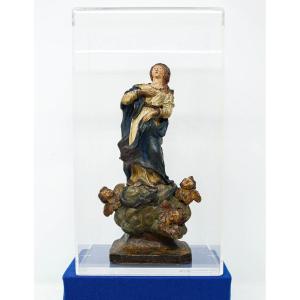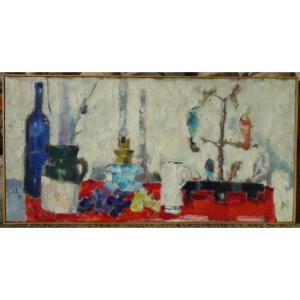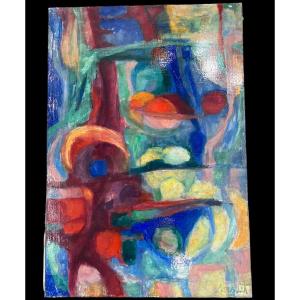Still life with fish
(2) Oil on canvas, cm 46 x 62
With frame, cm 65 x 80
The brightness and lively stage construction indicate the quality of the pair of still lifes examined and lead the research attributed to the prolific and long-standing workshop of the Recco. Fish of different shapes and colors, crustaceans and corals, described with expert realism, stand out theatrically on a dark bottom, with limited distinctive features, demonstrating the artistic quality of the painter responsible for the execution of the two canvases. The rich and opulent composition fits perfectly into the tradition of the Neapolitan still life, particularly flourishing in the seventeenth century, which is developed from the workshop of the Recco family, of which Giuseppe and Elena were the most prominent representatives. With lively realism and a skilful use of light, the anonymous author working at the Recco workshop depicts the silver and blue-grey reflections of scales, the swirling torsion of bodies, the particular pink color of fins and gills, Combined with a sprouting vitality of freshly caught prey that exude the moist sea, they are its distinctive feature.
The birth of still life in Italy is linked to the revolutionary genius of Caravaggio who with his explosive statement "that he was so hard to make a picture of figures that one of fruit" He destroyed that principium distinctionis which relegated as in a ghetto the genre painting considered a less noble activity. At the beginning of the seventeenth century, in fact, it was an iron law that the importance of a painting was commensurate with the subject depicted. The idea that presided over the concept of beauty of a work of art was that of classical aesthetics based on metaphysical models, unattainable archetypes of objective reality.The long period during which still life, even if accepted, was considered a minor genre by academic culture has influenced our knowledge, because for centuries it has been kept on the margins of studies and museums. Loved only by a class of private collectors, it has suffered gravely from the dispersion and scattering of many collections, caused by the extinction of the houses, by ill-advised hereditary divisions followed by the abolition of the majority, from the simple economic decline that forced him to sell his family jewels.
The primeval origins of the Neapolitan still life continue to pervictiously escape the most accurate investigations, as they largely escaped the same De Dominici, among the main experts of the Neapolitan developments of the genre, that he began his chapter on the subject at already begun speech, talking about Luca Forte and the Porpora and candidly confessing not to have enough news about the most ancient masters.














































 Le Magazine de PROANTIC
Le Magazine de PROANTIC TRÉSORS Magazine
TRÉSORS Magazine Rivista Artiquariato
Rivista Artiquariato